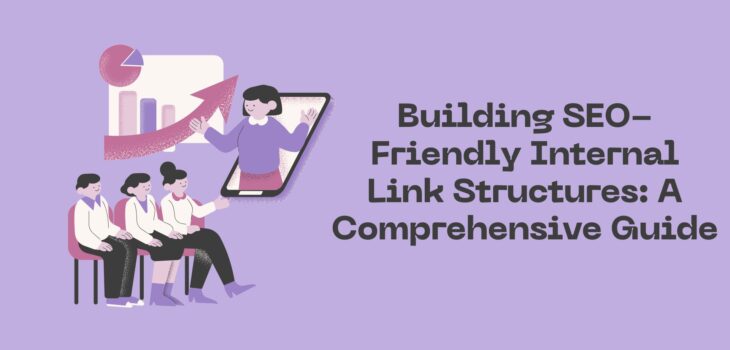 Digital Marketing
Digital Marketing
Building SEO-Friendly Internal Link Structures: A Comprehensive Guide
In the vast and ever-evolving world of digital marketing, Search Engine Optimization (SEO) remains one of the most effective strategies to enhance a website’s visibility and drive organic traffic. Among the many facets of SEO, internal linking plays a crucial role yet is often overlooked or misunderstood. A well-planned internal link structure not only helps search engines crawl and index your website more efficiently but also improves user experience, which in turn boosts your site’s rankings.
This article dives deep into building SEO-friendly internal link structures, exploring their importance, best practices, common mistakes, and actionable strategies to implement on your website.
What Are Internal Links and Why Are They Important?
Internal links are hyperlinks that point from one page to another within the same website domain. Unlike external links, which lead to different domains, internal links keep visitors navigating your own site.
Importance of Internal Linking in SEO:
- Improves Crawlability and Indexing: Search engine bots use links to discover new pages and understand the structure of your website. A good internal linking system ensures all important pages get crawled and indexed.
- Distributes Page Authority: Links pass “link juice” or authority between pages, helping to boost rankings for those linked pages.
- Enhances User Experience: Proper linking guides visitors through related content, increasing engagement and reducing bounce rates.
- Helps Define Site Architecture: Internal links clarify the relationship between pages, helping search engines understand which pages are most important.
- Increases Time on Site and Conversion: By leading visitors to additional relevant content or product pages, internal linking can boost conversions and revenue.
Key Elements of an SEO-Friendly Internal Link Structure
Logical Site Hierarchy
A clear and hierarchical structure organizes your content in layers: from homepage → categories → subcategories → individual pages. This helps both users and search engines understand the flow and priority of information.
- Homepage: Typically the strongest page with the most authority.
- Category Pages: Group related content and pass authority down.
- Detail Pages: Specific articles or product pages, linked appropriately.
Use of Descriptive Anchor Text
Anchor text is the clickable text in a hyperlink. Using relevant, descriptive anchor text helps both users and search engines know what the linked page is about.
- Avoid generic phrases like “click here.”
- Use keywords naturally but avoid keyword stuffing.
- Make sure anchor text matches the linked page topic.
Link Depth and Click Distance
Pages that are too deep in the structure (more than 3-4 clicks away from the homepage) may be hard to find and get less link authority. Ideally, every important page should be accessible within 3 clicks from the homepage.
Avoid Excessive Linking
While internal links are beneficial, too many on a single page can dilute the link juice and confuse both users and search engines.
- Keep internal links relevant and limited.
- Focus on quality over quantity.
Strategies for Building an SEO-Friendly Internal Link Structure
Plan Your Site Architecture
Start with a sitemap or flowchart that maps out all your main pages and their relationships. Aim for a pyramid-shaped structure with the homepage at the top and detailed content at the base.
Use Contextual Linking
Contextual internal links appear naturally within the body of your content and connect related topics. For example, an article about “SEO best practices” could link to another post about “keyword research.”
Leverage Navigation Menus and Breadcrumbs
- Navigation Menus: Should reflect your site hierarchy, allowing users to access main categories easily.
- Breadcrumbs: Show users the path they took to reach the current page and improve crawlability.
Utilize Footer Links Wisely
Footers can include important links but avoid stuffing them with too many. Focus on linking to key pages like contact, about, or popular categories.
Regularly Audit and Update Links
Over time, pages may be removed, URLs changed, or content updated. Use tools like Google Search Console or Screaming Frog to identify broken or orphaned pages (pages with no internal links) and fix them.
Incorporate Related Posts or Products Widgets
For blogs or e-commerce sites, related content widgets help keep visitors exploring by linking to similar articles or products.
Common Internal Linking Mistakes to Avoid
- Using Non-Descriptive Anchor Text: “Read more” or “here” provides no context.
- Linking to Irrelevant Pages: Links should always be contextually relevant.
- Ignoring Orphan Pages: Pages with no internal links get little to no traffic or authority.
- Overloading Pages with Too Many Links: Dilutes link equity and can confuse visitors.
- Linking Only from the Homepage: Internal linking should be spread throughout the site.
Tools to Help You Build and Monitor Internal Link Structures
- Google Search Console: Monitor internal links and crawl errors.
- Screaming Frog SEO Spider: Crawl your site to analyze link structures and broken links.
- Ahrefs / SEMrush: Advanced SEO tools that provide internal linking reports and suggestions.
- Yoast SEO (for WordPress): Offers internal linking suggestions while you write content.
Measuring the Impact of Internal Linking on SEO
After implementing internal linking improvements, monitor key metrics:
- Organic traffic growth
- Pages per session
- Average session duration
- Bounce rate reduction
- Keyword rankings improvement
By comparing these metrics over time, you can assess the effectiveness of your internal linking strategy.
Conclusion
Building an SEO-friendly internal link structure is a powerful and often underutilized way to boost your website’s search engine rankings and enhance user experience. By planning a logical site hierarchy, using descriptive anchor text, maintaining link depth, and regularly auditing your links, you create a website that’s easier for search engines to crawl and for users to navigate.
Invest time into mastering internal linking — it’s a foundational SEO tactic that supports your entire digital presence and helps you achieve long-term success.









